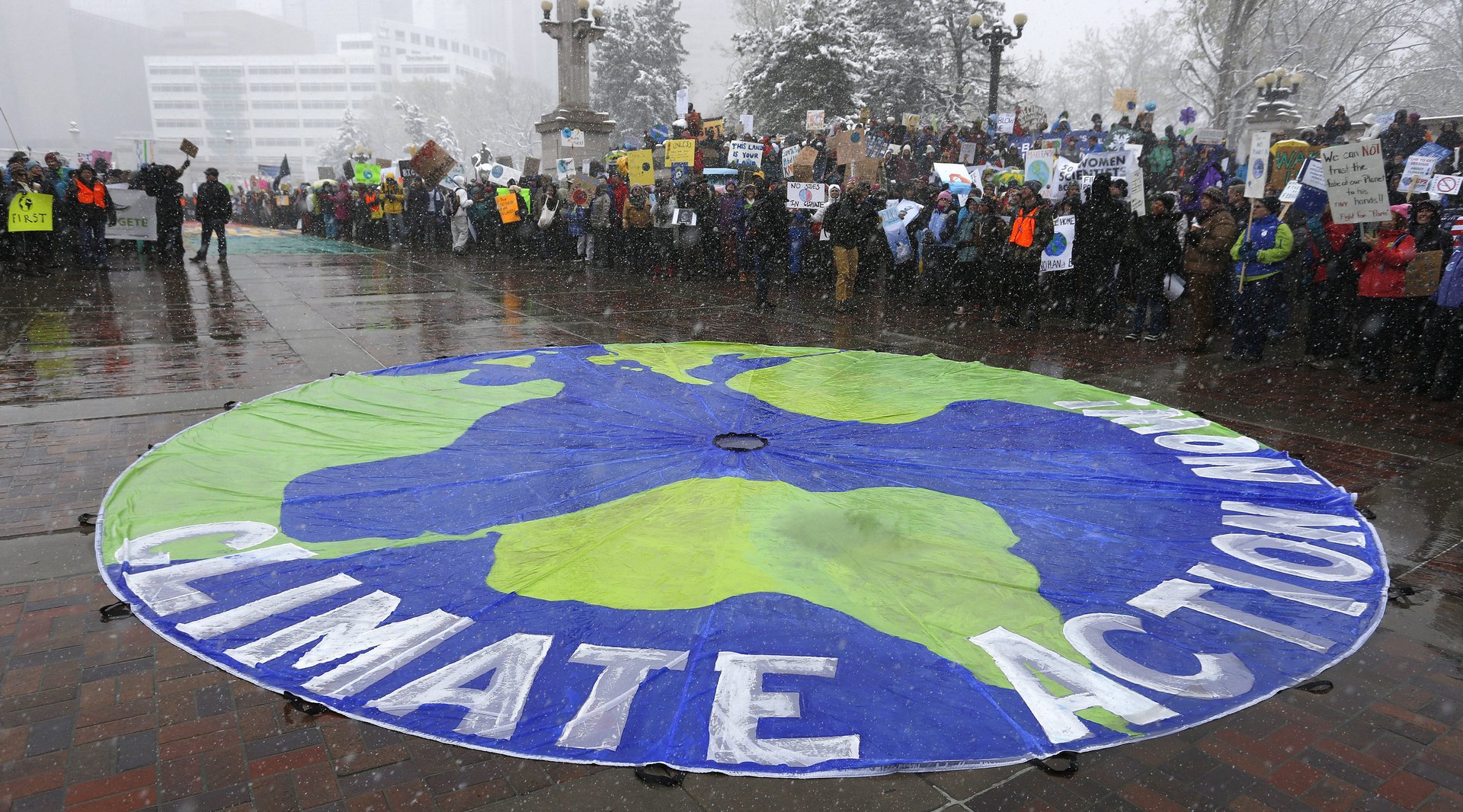The Paris agreement accidentally created a backdoor for US states and companies to defy Trump’s defection
Chinese president Xi Jinping does not make it a habit of meeting with state-level American politicians, but on Tuesday Jinping sat down with California governor Jerry Brown, to talk about climate change. The meeting between the president and the governor was all over Chinese state-run news, and looked every bit like a meeting between heads of state. Under normal circumstances, Xi would be talking climate change with US president Donald Trump, or at least with US energy secretary Rick Perry—who was at the same energy conference as Brown and Xi, but reportedly did not meet with Xi. But these are not normal circumstances.


Chinese president Xi Jinping does not make it a habit of meeting with state-level American politicians, but on Tuesday Jinping sat down with California governor Jerry Brown, to talk about climate change. The meeting between the president and the governor was all over Chinese state-run news, and looked every bit like a meeting between heads of state. Under normal circumstances, Xi would be talking climate change with US president Donald Trump, or at least with US energy secretary Rick Perry—who was at the same energy conference as Brown and Xi, but reportedly did not meet with Xi. But these are not normal circumstances.
Welcome to the US’s new shadow government on climate change.
In an improvised and rapidly expanding effort to push forward on the US’s climate commitments without Trump’s White House, a number of American states, cities, and businesses have publicly committed to the goals of the Paris agreement. But Brown, along with two other US state governors, 30 mayors, more than 80 university presidents, and over 100 businesses, are taking it a step further: The New York Times reports they’ve formed an as-of-yet unnamed coalition, and are in talks to submit their own climate pledge to the UN, and become a party to the Paris Agreement to fill the space the United States government plans to vacate.
“We’re going to do everything America would have done if it had stayed committed,” said former New York City mayor Michael Bloomberg, who is coordinating the effort, according to the Times.
Interestingly, the Paris agreement has a built in mechanism for that: Sub-national groups can enter parallel pledges through the United Nation’s Non-State Actor Zone for Climate Action (NAZCA) portal.
While this does not give make them party to the agreement in the legal sense—as of right now, only nations can do that—it effectively lets them do the same thing: Subnational groups can submit emissions reductions targets and “declare these to the world,” as the Brookings Institute put it. They can then report their progress through NAZCA’s data partners, which have established uniform measurement and reporting tools. Over 12,500 pledges by subnational governments and companies have already been submitted this way.
The mechanism likely wasn’t intended as a way for states and regional governments to step in to fill the vacuum created by their own lapsed national government, but as a means to broadly encourage inclusion. The idea behind nonbinding pledges in general was just that: if every party decided on their own, voluntary pledge, there would be a low barrier for entry but a high likelihood of follow-through, because each country pledged what was technologically and politically possible for them to fulfil.
It is unclear how exactly the ad-hoc US coalition, which does not yet have a name, plans to enter the Paris agreement, or what those negotiations would look like. But it is worth keeping an eye on NAZCA as their effort develops.